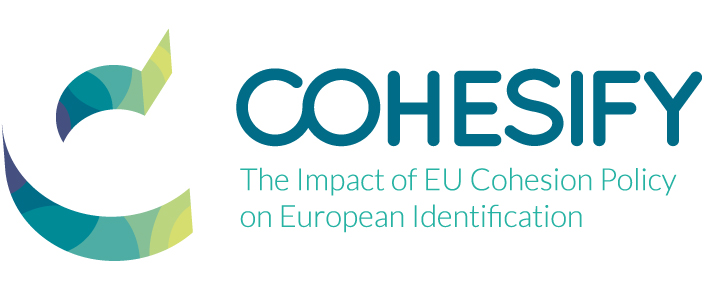
“What has the EU ever done for us?”Panorama, Autumn 2016, N°58
September 12, 2016
European Identity and citizen attitudes to Cohesion policy: what do we know ?
October 26, 2016
“One problem the policy faces is related to how we communicate about it”. The words of Commissioner Creţu at the Slovak EU Presidency Conference in Bratislava summed up the paradox facing Cohesion policy: there is more evidence than ever before on the added value of the policy, but few people seem to be listening, either in the Commission or the Member States.
At the heart of the several debates at the SK Presidency Conference (15-16 September 2016) on the performance of Cohesion policy and its future post-2020 is how the policy is perceived. The recent ex post evaluation of ERDF in 2007-13 concluded – based on analysis using a range of evaluation methods - that Cohesion policy made a significant contribution to jobs and growth and to the reduction of regional disparities despite the economic crisis. It also finds clear evidence of added value in terms of the additionality of investment, with a net positive impact on every EU region. It finds that Cohesion policy enabled SMEs to keep afloat and even expand during the crisis, and it continued to improve the quality of life through investment in transport, waste and waste water infrastructure to meet European goals.
The ex post evaluation of the ESF also has positive findings on the policy. The evidence from 2007-13 is that ESF was effective in supporting national and EU priorities in the area of human capital and supporting disadvantaged groups, with targeted, tailored interventions highlighted as a key success factor.
It is of course not unalloyed good news, and the ex post evaluations have many critical conclusions and recommendations – particularly regarding weak administrative processes, difficulties with absorption, and burdens on implementing bodies – that justify the 2013 reforms, and indeed the need for further improvements post-2020. However, the overall message is one of a policy that ‘works’.
Yet, this message does not seem to have got through. At the same conference in Bratislava, the view of the German Federal Ministry of Finance was once again presented starkly: Cohesion policy is focused on historical priorities rather than current challenges; it is being targeted on national not EU objectives; and it needs to be redirected to European public goods and support structural reforms. This argument might well have been true in the early 2000s, but after two significant reforms Cohesion policy is in the vanguard in delivering EU objectives (spending more on RTDI, for example, than under Heading 1a), is allocating funding to European public goods, and is supporting structural reforms through ex ante and macroeconomic conditionalities and links to CSRs.
There is also little sign of appreciation of Cohesion policy within the Commission. President Juncker’s State of the Union speech made extensive references to the importance of solidarity but no explicit recognition of the EU’s most important instrument supporting economic, social and territorial cohesion.
Indeed, there is a something of a double standard in judging different EU policies. In the recent Mid Term Review (MTR) of the 2014-20 EU Budget, the European Fund for Strategic Investments (EFSI) is judged by the Budget Commissioner Kristina Georgieva to be a “highly-performing” programme because it is committing funding quickly. So good is the performance, it seems, that a doubling of the EFSI funding is justified, without any rigorous and independent evaluation of whether the claimed leverage effect is actually being achieved. There are also important questions about EFSI’s additionality – whether it is attracting new projects or merely replacing the funding structure of private or public projects that were already planned – let alone whether it is funding projects that are delivering on EU objectives. Substantial EFSI funding is flowing into financial instruments, although their performance to date has often been weak, in terms of both efficiency and effectiveness, as the European Court of Auditors has noted recently. Other Heading 1a competitiveness programmes, such as COSME, CEF and Horizon 2020, are also judged to be “successful programmes and instruments” based on applicant demand and the commitment of funding, whereas the “delays in Cohesion policy” are based on the level of payments.
As part of the EU’s budget focussed on results initiative, the Commission has started publishing information about results achieved across EU funding instruments. It is striking that Cohesion policy is the EU policy domain - out of around 40 instruments included on the EU Results website - with the largest number of selected projects considered to have generated results and improved the lives of citizens.
Over the past decade, Cohesion policymakers have been pushed increasingly onto the defensive, under pressure from critics who claimed that the policy was poorly aligned with EU objectives, under-performing and bureaucratic. The complex implementation of Cohesion policy has certainly not been solved, and key themes for the post-2020 reform will be simplification of rules and differentiation of management. However, the past two reforms have reshaped the regulatory framework and focused implementation much more on delivering EU priorities and performance. Compared to other parts of the EU budget, Cohesion policymakers have a very good story to tell, but they will need to become much more assertive and convincing in communicating its successes.
Professor John Bachtler and Dr Carlos Mendez European Policies Research Centre, University of Strathclyde

